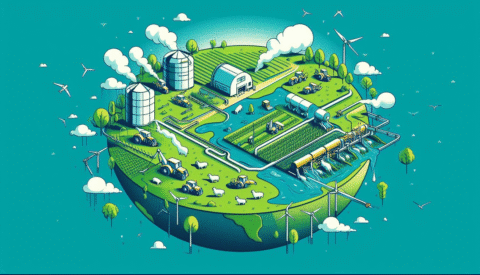Land-based GHG emissions are responsible for nearly a quarter of all human-caused emissions, and are embedded within the value chains of many sectors like food, retail and textiles.
These emissions can be hard to abate and many companies cite technology unknowns as a key barrier for reaching net zero[1]. This is because it can be difficult to find early-stage innovations that offer the maturity and scalability needed for deep and rapid decarbonization across corporate value chains.
Despite these uncertainties, companies must tackle their land-based emissions to avoid falling behind on corporate carbon targets and increased scrutiny from investors, customers and press. For example, land-based emissions comprise over 80% of the carbon footprint of Mars, one of the world’s largest privately held food companies, and Mars has committed to reduce these emissions almost in half by 2030.
To reach ambitious Scope 3 targets, companies need visibility of promising technologies that can be integrated into their value chains. Here are some exciting innovation areas that offer potential:
Fertilizer use
Why it matters:
Fertilizer emissions account for 5% of global GHGs[2], and in many cases can be reduced by over 50% at a cost of under USD 50/tCO2e[3].
What’s exciting:
Pivot Bio (Series D) is enhancing nitrogen delivery which has avoided nearly 1 megaton CO2e since 2022, while optimizing crop yields, profitability and food security.
Livestock methane
Why it matters:
Livestock causes a third of global methane emissions[4], and can be cut by nearly 50% in several regions at a cost of under USD 100/tCO2e[5].
What’s exciting:
CH4 Global (Series B2) is developing natural feed supplements that reduce cattle methane emissions by 70-90% for gigaton-scale impact.
Soil health
Why it matters:
Soil stores twice as much carbon than the atmosphere, and enhancing soil carbon sinks can be done for less than USD 50/tCO2e[6].
What’s exciting:
Groundwork Ag (Series B) is using mycorrhizal fungi to sequester carbon, reduce fertilizer use and improve crop yield. It’s estimated this fungi can sequester several gigatons of CO2.
How much are Scope 3 emissions worth? These forecasted abatement costs of USD 50-100/tCO2e are quickly becoming competitive with voluntary carbon market prices and internal carbon prices that corporates are adopting, and this competitiveness will increase as market prices rise in the future.
Understanding your Scope 3 emissions and the most practical pathway to reduce is critical to a robust, long term carbon reduction strategy. Get started today.
Sources
[1] https://sciencebasedtargets.org/resources/files/SBTi-Business-Ambition-final-report.pdf
[2] https://www.nature.com/articles/s43016-023-00698-w
[3] https://www.pbl.nl/sites/default/files/downloads/pbl-2016-science-based-greenhouse-gas-emissions-targets-for-agriculture-and-forestry-commodities-2856.pdf
[4] https://www.unep.org/news-and-stories/story/methane-emissions-are-driving-climate-change-heres-how-reduce-them
[6] https://climate.ec.europa.eu/system/files/2016-11/soil_and_climate_en.pdf




